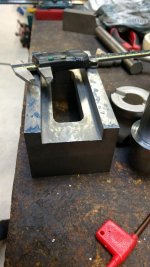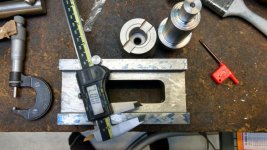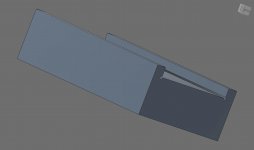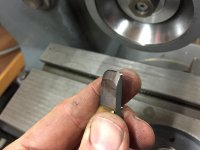Luke Rickert
Hot Rolled
- Joined
- Oct 24, 2007
- Location
- OSLO
I am a novice scraper and have a course with Richard in April but in the mean time I am working on getting my equipment together. I can at least make and sharpen scrapers and would like to make one for a little exercise I have been working on. It is a drill press vise made from a rough casting. As it does not need to be scraped I think it makes it an ideal project to learn on before I go and mess up my schaublin 135 cross slide etc.
The detail is shown in the attached photos but is basically a 10mm (0.394in) wide flat with a slot on one side and shoulder on the other. Access with the current scrapers I have made is difficult. Do I need one that is very narrow, maybe pull type etc? I don't have to scrape this, I can get a very true and flat finish with my mill that will be more than sufficient for the project but figure I might as well figure out how it is done.
thanks
Luke
The detail is shown in the attached photos but is basically a 10mm (0.394in) wide flat with a slot on one side and shoulder on the other. Access with the current scrapers I have made is difficult. Do I need one that is very narrow, maybe pull type etc? I don't have to scrape this, I can get a very true and flat finish with my mill that will be more than sufficient for the project but figure I might as well figure out how it is done.
thanks
Luke








 Personally I would have used a slitting saw at a 45 degree angle, it's good experience in setting up to do so, and may identify clearance issues with your saw etc that you hadn't foreseen.
Personally I would have used a slitting saw at a 45 degree angle, it's good experience in setting up to do so, and may identify clearance issues with your saw etc that you hadn't foreseen.
